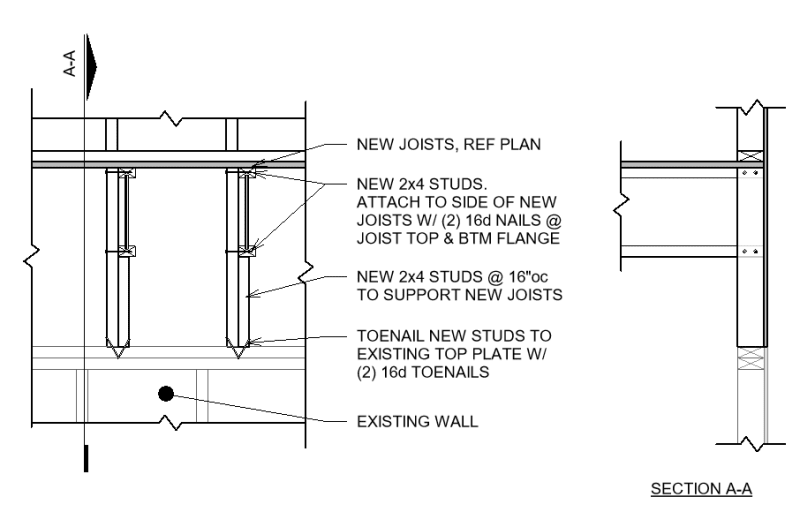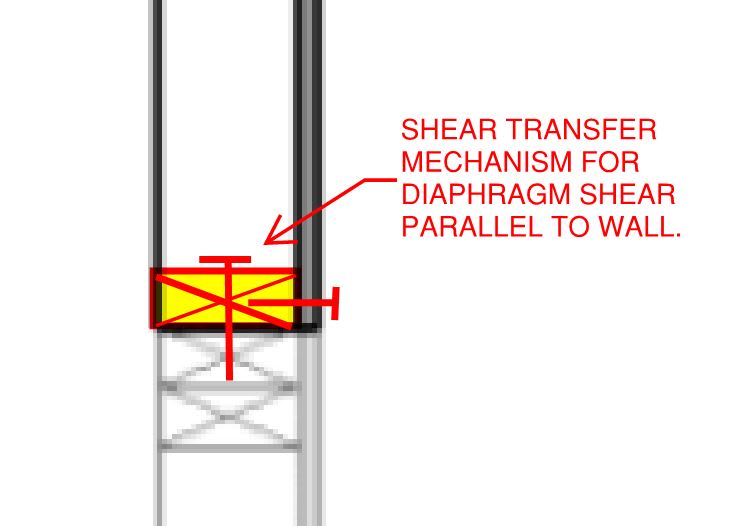youngblood30
Structural
I recently had a look at a set of plans with a new 2x framed pony/cripple wall(about 12-18" tall) built on top of an existing 2x framed wall(9' tall) for a 2nd floor addition. They clearly just wanted more ceiling height on the first floor while constructing the new 2nd floor addition on top of the pony wall.
It looks like a local architect stamped this but I don't see any details to address the clear hinge point this creates. I know this is done a fair amount with foundation walls up north but without kickers or balloon framing I don't see how this can work especially in a higher wind zone. What gives here?
It looks like a local architect stamped this but I don't see any details to address the clear hinge point this creates. I know this is done a fair amount with foundation walls up north but without kickers or balloon framing I don't see how this can work especially in a higher wind zone. What gives here?


